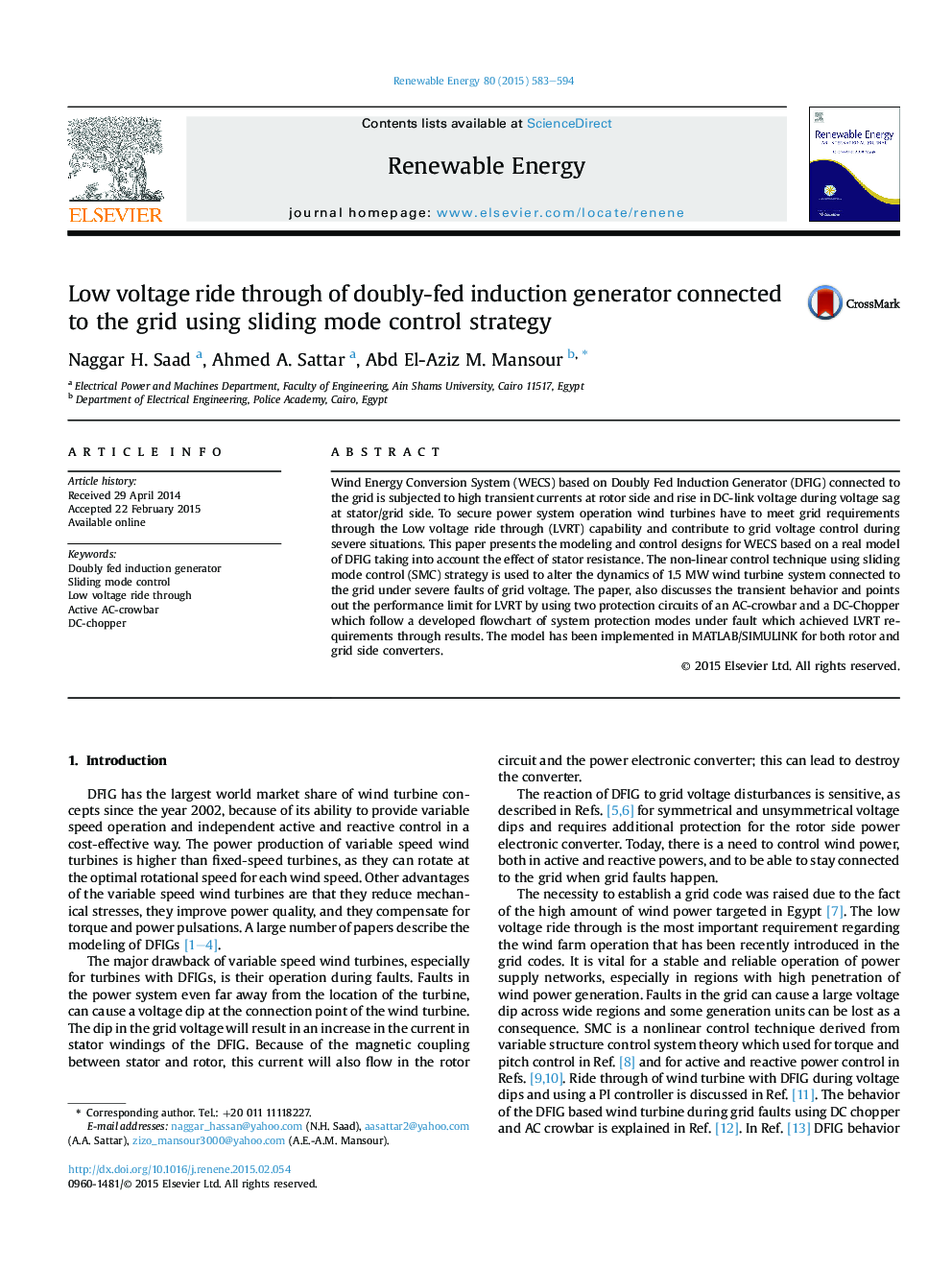| Article ID | Journal | Published Year | Pages | File Type |
|---|---|---|---|---|
| 6767560 | Renewable Energy | 2015 | 12 Pages |
Abstract
Wind Energy Conversion System (WECS) based on Doubly Fed Induction Generator (DFIG) connected to the grid is subjected to high transient currents at rotor side and rise in DC-link voltage during voltage sag at stator/grid side. To secure power system operation wind turbines have to meet grid requirements through the Low voltage ride through (LVRT) capability and contribute to grid voltage control during severe situations. This paper presents the modeling and control designs for WECS based on a real model of DFIG taking into account the effect of stator resistance. The non-linear control technique using sliding mode control (SMC) strategy is used to alter the dynamics of 1.5Â MW wind turbine system connected to the grid under severe faults of grid voltage. The paper, also discusses the transient behavior and points out the performance limit for LVRT by using two protection circuits of an AC-crowbar and a DC-Chopper which follow a developed flowchart of system protection modes under fault which achieved LVRT requirements through results. The model has been implemented in MATLAB/SIMULINK for both rotor and grid side converters.
Related Topics
Physical Sciences and Engineering
Energy
Renewable Energy, Sustainability and the Environment
Authors
Naggar H. Saad, Ahmed A. Sattar, Abd El-Aziz M. Mansour,
